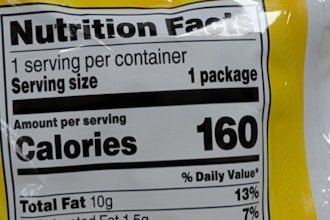
You are what you eat, but it hasn’t always been easy to know exactly what that is. The Food and Drug Administration’s Nutrition Facts label has become familiar to consumers looking for detailed information about exactly what it is they’re eating. For many years, this label has served that purpose to varying degrees of success. Over the years, however, a number of changes have made the Nutrition Facts label less helpful than intended. Our understanding of Americans’ dietary habits has become more accurate. Research has changed the way we think about nutritional categories. Improved fitness awareness has made certain information on the label less important. In short, the Nutrition Facts label no longer adequately reflected the information that was most important to consumers concerned about their health.
This is why, in 2016, the FDA announced some significant changes to the Nutrition Facts label that food manufacturers and packagers will be required to follow by 2018. Some of these changes are obvious at first glance, but others are less noticeable. For food manufacturers and packaging designers, understanding these changes and the reasoning behind them is crucial for remaining in compliance with FDA regulations in 2018 and beyond.
For example, the most obvious change to the Nutrition Facts label is that the calorie count for a serving has become much more prominent in an effort to make it easier for consumers to see. A subtler tweak to the label is that the typical serving size has been adjusted to more accurately reflect the actual eating habits of the average American, rather than a suggested serving size. This information also has been made more prominent on the new Nutrition Facts label. Some of the label’s elements have been revised to make them clearer to the consumer. Others have been changed to reflect the most current scientific understanding of our nutritional requirements. All of these changes add up to a revised Nutrition Facts label that must be included on food packaging by 2018. If you’re not already in compliance, review the following guide to find out what needs to be changed and why.






















